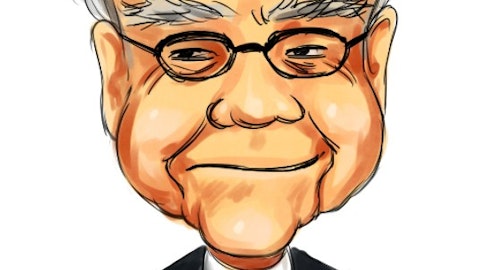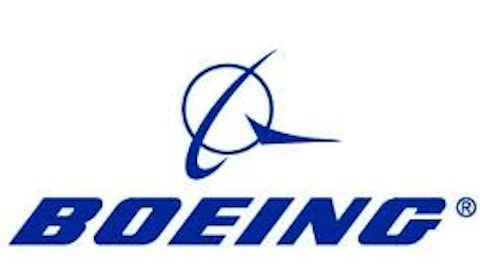Sequestration budget cuts have already started slashing into the U.S. defense budget and unprepared defense contracts are soon going to start feeling the pain.
This article sets out the geographical split of revenues across four major U.S. government defense contractors. The purpose of this is to highlight players in the defense sector within the U.S., analyzing each company to establish if they have diversified outside of the U.S. enough to be protected from some of the spending cuts.
General Dynamics Corporation (NYSE:GD)
| Division | Revenue | Year-Over-Year Change |
| Geographical Split — Revenue 2012 | ||
|---|---|---|
| United States | $25,004 | -79.30% |
| Rest of the World | $1,240 | -3.90% |
| United Kingdom | $1,027 | -3.30% |
| Canada | $878 | -2.80% |
| China | $876 | -2.80% |
| Other | $2,488 | -7.90% |
Figures in millions.
General Dynamics Corporation (NYSE:GD)’ adjusted 2012 full-year earnings from continuing operations were $2.3 billion. On a GAAP basis, the company reported a loss from continuing operations of $332 million.
During the fourth quarter, it recorded a $2 billion goodwill impairment related to its Information Systems and Technology group, which is one of the reasons that the company reported a GAAP loss. It also recorded $867 million in other charges in the quarter.
Unfortunately, the overwhelming majority (79%) of General Dynamics’ 2012 revenue is from defense spending in the U.S., with only 3% coming from the faster-growing Chinese market and a combined 21% for the rest of the world.
It should be noted that the 80% fall in revenues from U.S. operations is for the most part related to the company’s goodwill impairment and other charges. That said, General Dynamics Corporation (NYSE:GD) has very little diversification outside of the U.S., making it highly susceptible to spending cuts.
Raytheon Company (NYSE:RTN)
| Divisional Split — Revenue 2012 | ||
|---|---|---|
| Integrated Defense Systems | $5,037 | -19.10% |
| Intelligence & Information Systems | $3,012 | -11.40% |
| Missile Systems | $5,693 | -21.60% |
| Network Centric Systems | $4,058 | -15.40% |
| Space & Airborne Systems | $5,333 | -20.20% |
| Technical Services | $3,239 | -12.30% |
| Geographical Split — Revenue 2012 | ||
| Asia Pacific | $2,510 | -10.30% |
| Europe | $1,252 | -5.10% |
| Middle East | $2,470 | -10.10% |
| United States | $18,182 | -74.50% |
Figures in millions.
Like General Dynamics Corporation (NYSE:GD), Raytheon Company (NYSE:RTN) does most of its business in the U.S. However, unlike General Dynamics, Raytheon does about a quarter of its business outside the U.S.
Seventy-five percent of Raytheon’s 2012 revenue was from the U.S., 10% from Asia-Pacific, 10% from the Middle East, and 5% from Europe.
With 20% of Raytheon’s revenue coming from the faster-growing Asian and Middle East markets, this gives the company some diversification away from U.S. spending cuts. Fortunately, Raytheon Company (NYSE:RTN) only derives 5% of its revenue from Europe, so it avoids the continuing crisis there.
Both earnings and revenue fell broadly across all of Raytheon Company (NYSE:RTN)’s divisions during 2012, which was mostly due to the 75% decline in revenues from the US market. That said, divisional revenue only fell on average 10-20%, which indicates that although the US market is weakening, there is strength in other regions that continues to support the company.
United Technologies Corporation (NYSE:UTX)
United Technologies Corporation (NYSE:UTX) is the most diversified company in this piece. Unfortunately, the majority (26%) of the company’s non-U.S. revenue is from Europe, although this could include the faster-growing Baltic nations, which would give the company some protection from the defense cuts across the rest of the continent.
Twenty percent of United’s revenues are from the Asia-Pacific region, 45% from the U.S., and 9% from the rest of the world.
| Geographical Split | |||||||
|---|---|---|---|---|---|---|---|
| U.S. $ Millions | Revenue | Earnings | Profit Margin | Year-Over-Year Change | |||
| Asia-Pacific | $8,733 | $1,648 | 18.87% | -15.10% | |||
| Europe | $11,823 | $2,100 | 17.76% | -20.50% | |||
| Rest of the world | $4,964 | $772 | 15.55% | -8.60% | |||
| United States | $32,175 | $3,663 | 11.38% | -55.80% | |||
Figures in millions.
United Technologies Corporation (NYSE:UTX)’s highest profit margin comes from its operations in the Asia-Pacific market. Although the majority of its revenues come from the U.S., this is actually a relatively low margin area for the company. Both of United’s European and Asian divisions produce a profit margin of more than 17%, while the company’s U.S. operations have a profit margin of only 11%.
Furthermore, earnings from the European and Asian markets together total more than the company’s earnings from the U.S. market. Leading me to believe that although the majority of United’s revenue comes from U.S. defense spending, the highly lucrative European and Asian markets will hold the company together while U.S. defense spending falls.
| Defense Solutions | $4,191 | -39.60% |
| Health,Energy and | $2,858 | -27.00% |
| Intelligence & Cyb | $3,540 | -33.40% |
| Geographical Split – Revenue 2012 | ||
| United States | $10,587 | -3% |
Figures in millions.
It must be noted that SAIC’s 2012 revenues were affected by a one-time writedown of $540 million. Without this loss, the company would have produced 2012 revenues of $10,920 (up 1%) and earnings of $851 million (-10%), an operating profit margin of 7.7%.
All of SAIC’s revenues are from the U.S., offering no diversification away from spending cuts. However, unlike its peers in this piece, the company is active in the highly defensive pharmaceutical research market. In addition, it is involved in the manufacture of anti-viral treatments and devices to aid physicians in the fight against cancer.
SAIC’s operations within the highly defensive health-care sector give it one of the strongest outlooks in this group. Indeed, although SAIC only derives 27% of its revenue from health care, the company has a 10% profit margin on this revenue. On the other hand, SAIC’s defense division generated 40% of total revenue for 2012 but had a -4% profit margin.
Conclusion
So, overall, when it comes down to global diversification, United Technologies Corporation (NYSE:UTX) appears to have the best diversification based on 2012 revenues. General Dynamics has the worst diversification with almost all of its revenues based in the U.S.
Finally, SAIC has no global diversification but is diversified into other industries, most importantly pharmaceuticals.
The article Defense Breakdown originally appeared on Fool.com and is written by Rupert Hargreaves.
Fool contributor Rupert Hargreaves has no position in any stocks mentioned. The Motley Fool owns shares of General Dynamics and Raytheon.
Copyright © 1995 – 2013 The Motley Fool, LLC. All rights reserved. The Motley Fool has a disclosure policy.






